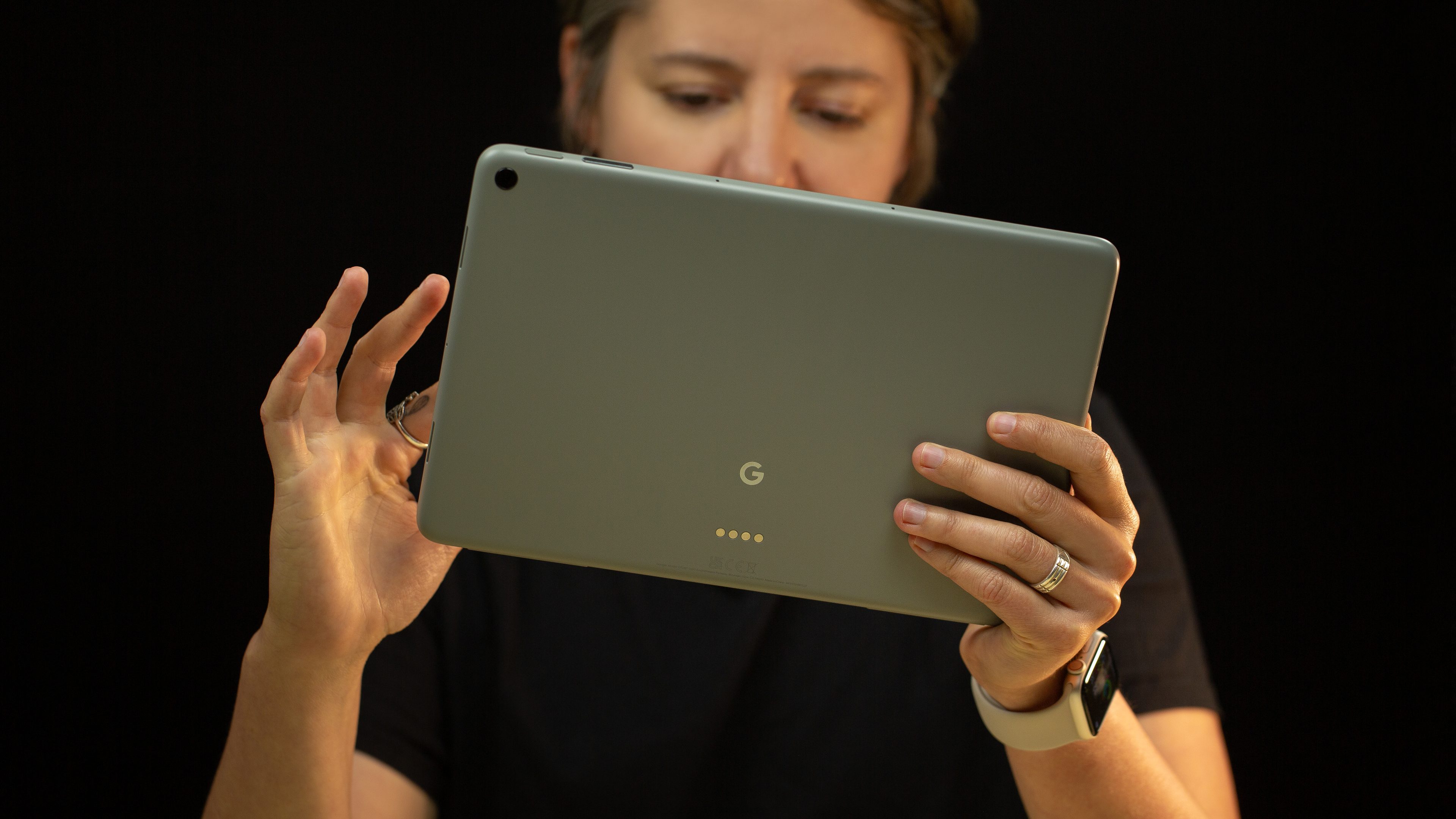
After nearly a year since its announcement, the Google Pixel Tablet finally landed in my hands. This flagship Android tablet doubles as a smart display when used with the included dock, positioning it as Google’s showcase device for Android on larger screens. But how good is it, really? Here are our hands-on impressions of the Google Pixel Tablet.
Price and availability
The Google Pixel Tablet, with its 128 GB base model, is currently available for purchase at a starting price of $499. If you’re seeking more storage, the 256 GB variant can be yours for $599.
The tablet offers a palette of three different colors for you to choose from: Hazel (a sleek gray), Porcelain (an elegant white), and Rose (a shade exclusively available in the US). Please note that the package includes the speaker dock.

Even though the Pixel Tablet became available on June 20, its initial announcement was made much earlier, on May 11, 2022. It was later officially released by Google during their annual developer conference, Google I/O, held on May 10, 2023.
Design and display
Sporting a 10.95-inch display, the Google Pixel Tablet is compact, and it does remind me of the Samsung Galaxy Tab S8 Series, especially due to the aspect ratio of the display. The display is more rectangular than square, with a 16:10 format, which is excellent for streaming videos. However, the 493-gram weight can be felt when handling the tablet with one hand.
Pros:
-
The 16:10 aspect ratio works pretty well for streaming
. - Good display quality.
- Support for USI 2.0 stylus pens.
Cons:
- Design and position of the physical buttons.
The Pixel Tablet features a glass front and an aluminum frame and back, providing a sleek and sturdy design. Content is displayed on the 11-inch LCD screen, which offers a refresh rate of 60 Hz—something I find acceptable for a non-Pro tablet.
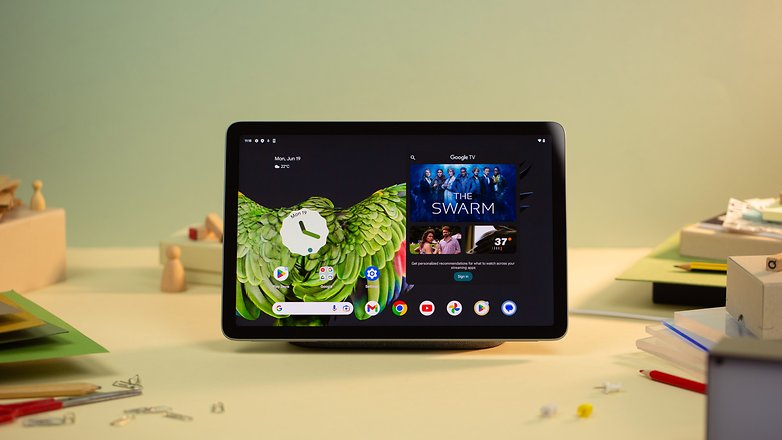
It also boasts a display resolution of 2560 x 1600 and 500 nits brightness, which significantly enhanced my experience of watching Netflix TV shows and YouTube videos. Moreover, reading content on apps such as Kindle and The New York Times was a pleasure on this device.
Another display feature that I personally find to be a fantastic addition is the support for USI 2.0 stylus pens.

On the back of the Pixel Tablet, we have the docking connectors (a.k.a. pogo pin connection)—more about the docking station later. These connectors, typically located on the tablet frame, are used for attaching a variety of accessories, such as keyboards. So, I’m still pondering how accessory manufacturers will handle this.
What piqued my curiosity, however, was the decision to position the power button, which doubles as the fingerprint sensor, at the same level as the frame. This creates a counterintuitive and user-unfriendly experience. Also, it’s uncomfortably close to the volume button, located on the same edge. So, as a first impression, I find this layout counterintuitive for a tablet, which is essentially designed to be held with two hands.
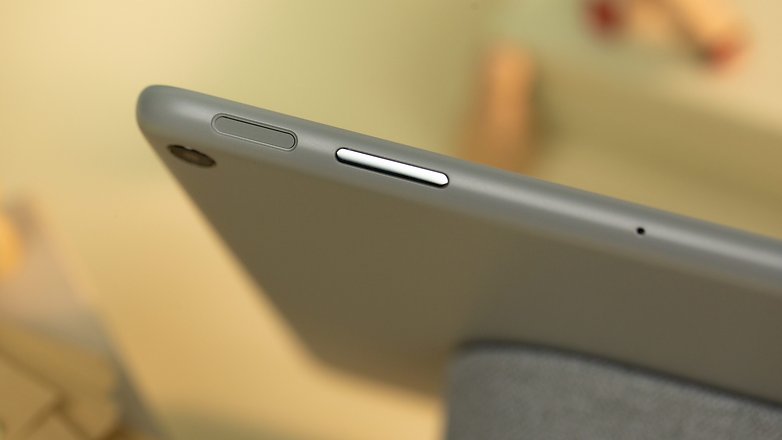
As if that weren’t enough, there are two rubbery supports on the bottom of the frame that can easily be mistaken for physical buttons. These design decisions frankly baffle me, even though I understand they are meant to serve as a protection when used with a tablet support accessory.

Speaker dock included
I recall the response of the audience at the Google I/O 2022 keynote when the Pixel Tablet dock station was introduced: it was met with resounding applause. I didn’t fully understand it at the time, but I now appreciate the decision to include the dock station with the Pixel Tablet. It’s intuitive to use, the sound quality is noticeably superior, and it conveniently charges the device while it’s docked at 15W max. charging rate.
Pros:
-
Dock packs additional speakers
. - It doubles as a charging station.
Cons:
- It only works when plugged in the socket.
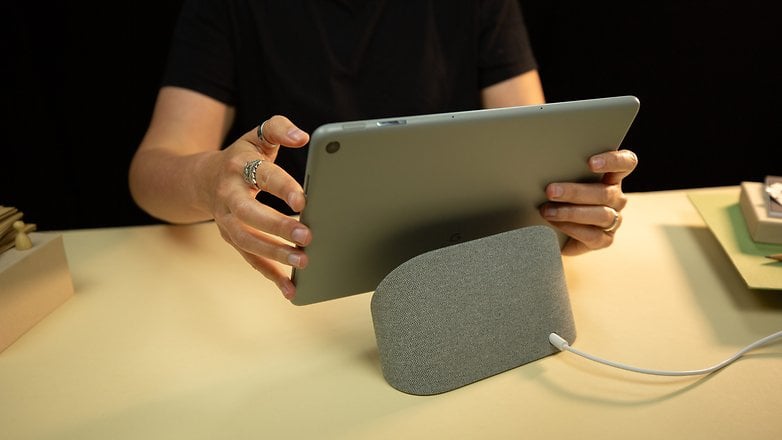
Although the Pixel Tablet is equipped with four built-in stereo speakers, they’re not designed for an exceptional audio experience, which can typically be achieved with a pair of wireless headphones. And this is where this combination makes a significant difference.
The docking station delivers the sound quality of a 43.5 mm full-range speaker. I’ve been using the device for less than 24 hours, but I can confidently state that the audio enhancement is notably superior, as one would expect.

Though it reminds me of Meta’s unsuccessful Portal device concept, this technology is far more practical. It’s wonderful to have it sitting on my work desk and to be able to easily dock the tablet on the station. It’s intuitive and eliminates the need for fussing with tablet cases or keyboard supports.
The magnetic docking interface works like a charm—not once has it failed to attach when I tried. Well done, Google!
The drawback—and there’s always one—is that the speaker dock only functions when plugged into a power source. This means you’re tied down by a cable. So, if you want to maintain this seamless experience across multiple rooms, you’ll need to invest in extra docks. However, for those concerned, the Pixel Tablet can also be charged via USB-C. Unfortunately, Google does not include a cable or USB charger in the box.
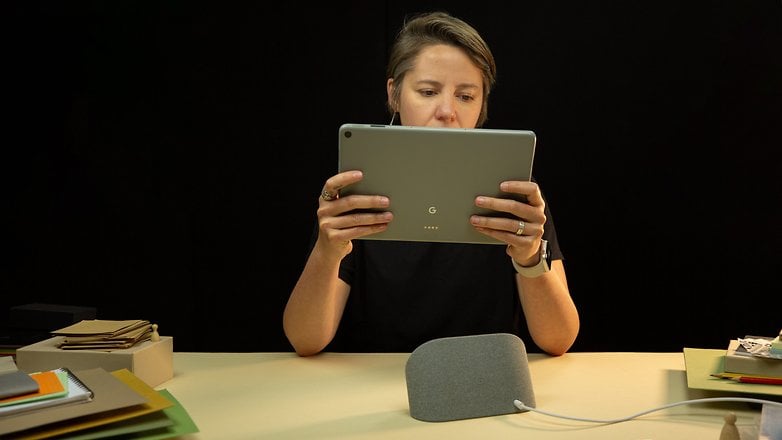
Beyond its impressive sound quality and charging capability, what sets this dock station apart? It also enables you to use the tablet in Hub Mode. This means you gain access to the Google Smart Home experience, complete with dedicated screen savers, reminders, and alerts via Google Assistant, casting capabilities, and, of course, the ability to control all your smart devices at home.
Performance and software
The Pixel Tablet operates on the same Tensor G2 processor that’s found in Google’s Pixel 7 smartphones, which is also combined with the Titan M2 security chip. You can anticipate the same level of AI processing for voice recognition, image processing, and features such as background blurring in photos, and more notably, during voice calls utilizing the built-in 8-megapixel selfie camera.
Pros:
-
The Tensor G2 chip reliability
. - Smooth, fluid experience.
- Long-term software support.
- The fingerprint sensor works flawlessly.
Cons:
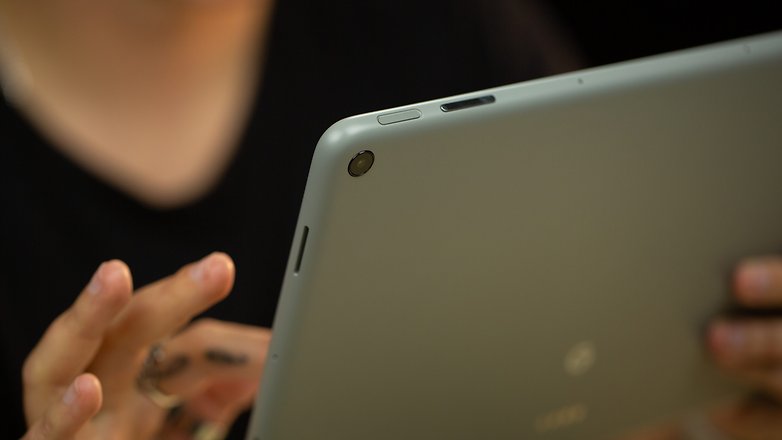
I didn’t have a lot of time to experiment with the Pixel Tablet before writing this hands-on, but overall, it provides a smooth and fluid experience. The Tensor G2 chip is paired with 8 GB of LPDDR5 RAM and comes in two different storage configurations: 128 or 256 GB of UFS 3.1.
As for security, aside from the multi-layer hardware security, there’s also the Private Compute Core. By definition, this manages all data at the device level.
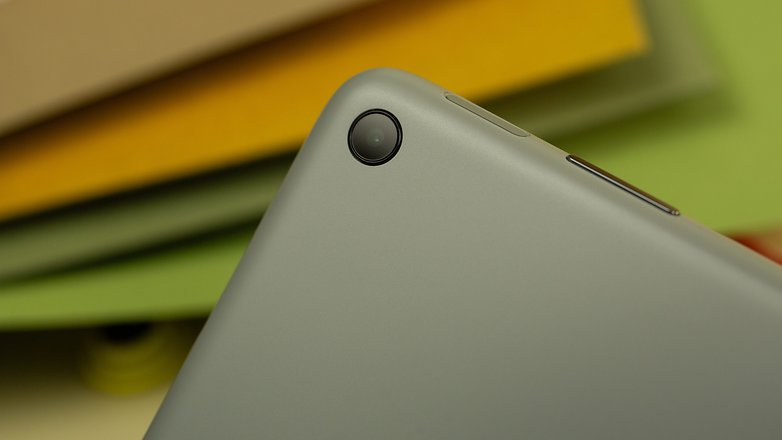
Now, let’s talk about software. It’s been a while since I’ve used Android tablets, so my thoughts on the user experience with the Pixel Tablet might come across as somewhat naive to some. However, for the first time in years, I feel that developers are dedicating more effort to optimizing their services for “Android for tablets”.
While not perfect, it’s clear that the apps are more than just replicas of what we see on Pixel phones. I’ve always used The New York Times app as a benchmark, and I found that my experience with it on the Pixel Tablet is almost identical to what I experience on my iPad 10. The Android 13 widgets also add a nice touch to the tablet experience, even though the operating system as a whole could still use some improvements in terms of a tablet UX.
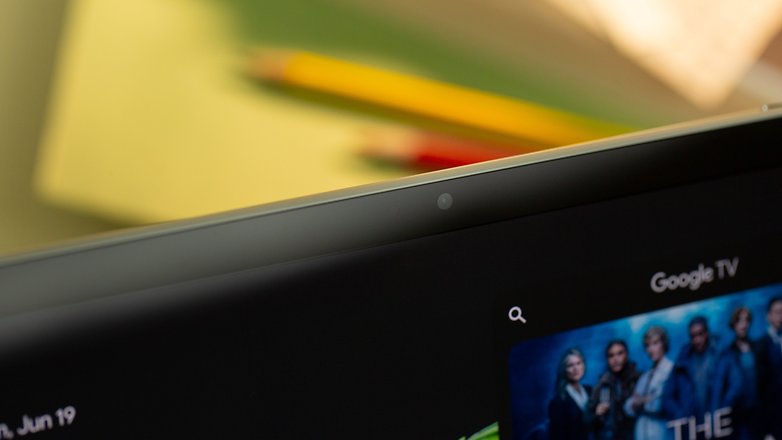
According to Google, there are “more than 50 Google apps” optimized for the Pixel Tablet, but it still feels like an upscaled Pixel phone experience… unfortunately.
The new Pixel tablet comes with a commitment to receive major Android updates for up to three years and security updates for five years. As it was launched with Android 13, we can expect it to be updated until Android 16, which is projected to be released in 2025.
Google Pixel Tablet battery
Google equipped the Pixel Tablet with a built-in 27-watt-hour battery (7,020 mAh), which according to the company’s lab tests, lasts up to 12 hours of video streaming. The device can be recharged via the charging speaker dock included in the box, or a USB-C charger, which is sold separately.
Since most of my time with the tablet was spent using the dock station, I can’t offer an informed opinion on the battery life at this stage. However,
I must mention that the charging dock is incredibly handy as it keeps the device powered wirelessly
.
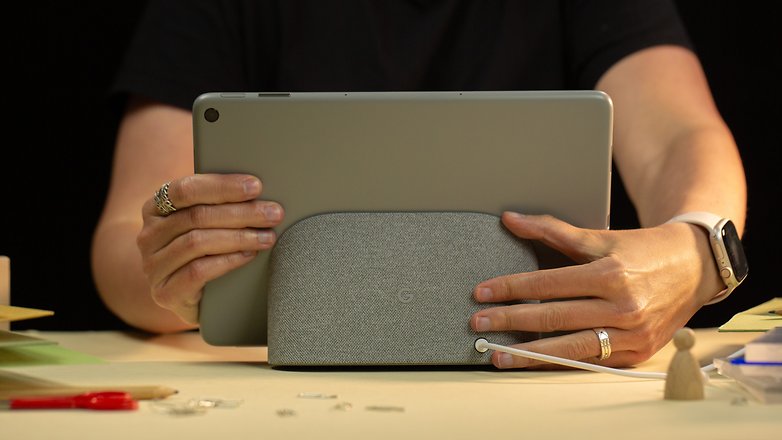
A more detailed analysis of the battery life will be provided in the full review in the coming days.
Google Pixel Tablet technical specifications
| Pure Android Tablet | |
|---|---|
| Product | |
| Picture |
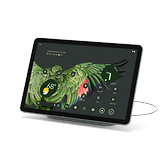 |
| Screen | 10.95-inch LCD |
| 2560 x 1600 pixels | |
| SoC | Google Tensor G2 Titan M2 security coprocessor |
| RAM | 8 GB LPDDR5 RAM |
| Storage | 128 / 256 GB UFS 3.1 ROM |
| Expandable storage | ❌ |
| OS | Android 13 5 years of updates |
| Camera | 8 MP | 1.12 μm pixel width | f/2.0 aperture | Fixed focus | 84° field of view | 1/4″ image sensor size |
| Selfie | 8 MP | 1.12 μm pixel width | f/2.0 aperture | Fixed focus | 84° field of view | 1/4″ image sensor size |
| Battery | 27 watt-hour (7,020 mAh) 15 W charging with the included dock |
| Connectivity | Wi-Fi 6 / Bluetooth 5.2 / UWB |
| Audio | Quad speakers |
| Colors | Porcelain, Hazel Rose (US only) |
| Dimensions and weight | 10.2 x 6.7 x 0.3 in, 17.4 oz 258 x 169 x 8.1 mm, 493 g |
Early Verdict
Indeed, Google has released a tablet, and the device is quite impressive. Personally, I find the speaker dock station to be a valuable add-on, though it doesn’t provide any extra features, only improving the audio and charging capabilities. As of now, I remain unconvinced by the Smart Home functionalities, and here’s why: it’s a tablet! When was the last time you heard of a Smart Home device that doubles as a tablet? The inverse should also not be a standard expectation.
That being said, upon first impression, it appears Google still needs to improve the coveted “Android tablet experience”, and I strongly believe this is the beginning of such efforts. In terms of hardware, the Pixel Tablet incorporates some solid components, but it still lags behind Samsung and Apple when it comes to advanced usage.
Overall, I liked the tablet; it’s compact and offers solid performance. It’s perfect for my two favorite use cases for tablets: reading newspapers and magazines, plus watching all my favorite videos on YouTube.
The real question is: Would I abandon my iPad for the Pixel Tablet? I don’t really think so, but this has less to do with the Pixel Tablet experience and more to do with the stronghold of the Apple ecosystem.
The full review of the Google Pixel Tablet will be published shortly, and we’re interested in what you would like to know about it. Please share your thoughts on the device in the comments below.






